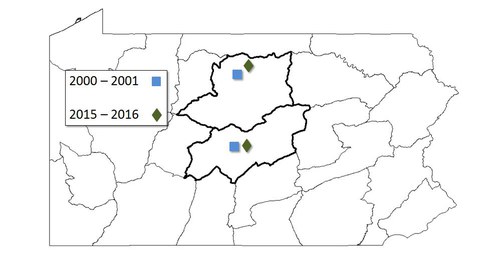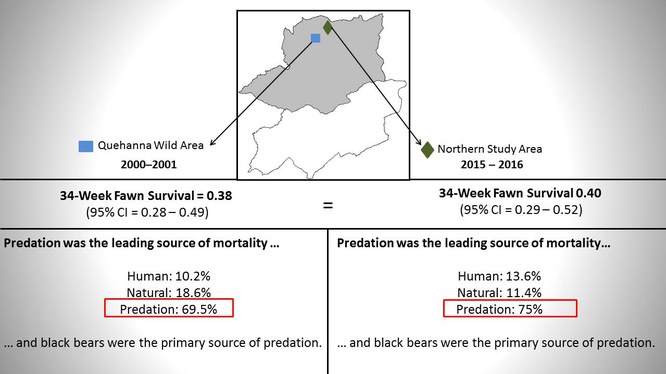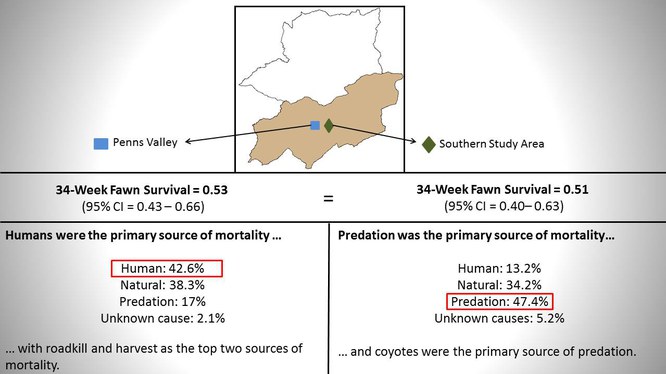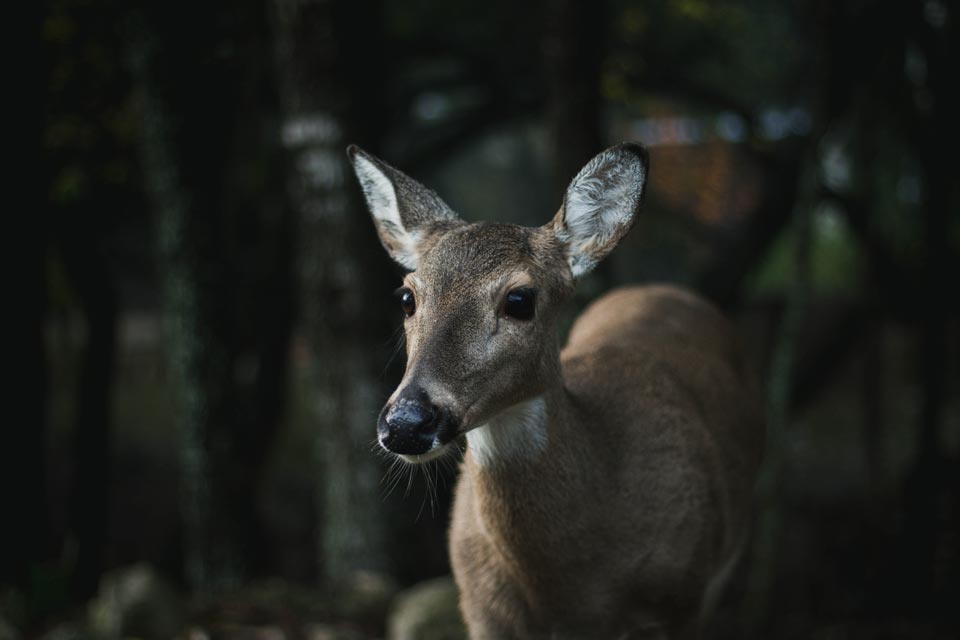Fawn survival can be influenced by many factors. In the words of the immortal David Bowie, “Ch-ch-ch-ch-changes, Turn and face the strange.” Fawns of today may be facing changes in landscapes, predator communities, and deer density.
How is a tiny fawn to deal with these changes?
Although fawn survival has been studied in North America since the 1970’s Pennsylvania first looked at fawn survival back in 2000-2001.
The locations of the current study areas and the two study areas used in 2000-01 can be seen below nestled in the Wildlife Management Units of 2G and 4D.

Paired with the current fawn survival study from 2015 to 2017 we had the perfect opportunity to look at how fawn survival ch-ch-ch-ch-changed between two points in time.
Every year the Pennsylvania Game Commission estimates the abundance of black bears and coyotes using a variety of different methods including hunter harvests, hunter surveys, live captures, and a bunch of statistics.
Statewide black bear and coyote abundances have increased 40% since 2000 although this is not consistent across all Wildlife Management Units.
In addition, deer population densities declined 23% by 2005 but have increased or remained stable since again depending on the Wildlife Management Unit.
So did these changes impact fawn survival?
When comparing fawn survival over time we wanted to keep as many things consistent as possible. We compared fawn survival and causes of death between the current Northern study area to the more northern study area from 2000-2001, Quehanna Wild Area and compared the current Southern study area to the more southern study area from 2000-2001, Penns Valley.
Not only was fawn survival similar from 2000-2001 to 2015-2017, it was almost the exact same! However, we did see some differences in the main causes of death.
Let’s start in the north. Looking at 34-week fawn survival (those that officially make it through their first hunting season), things haven’t changed much up north.

Black bears still top the predation category. And while coyotes (or canids) are the main predator of white-tailed deer fawns in North America, several studies do find black bears edging out their canine counterparts.
On to the south!

Penns Valley had more agricultural cover in their study area than we did in the current study that centered on Bald Eagle and Rothrock state forests. This may help explain why there were more human-caused deaths in 2000 than in the current study.
So time and those changes haven’t changed fawn survival! Which means adult survival is the most influential factor in whether population sizes increase or decrease.
Black bears, bobcats, coyotes, and the occasional dog are not altering the overall percentage of fawns reaching adulthood in Pennsylvania. Its’ business as usual.
M.S. Graduate Student
Department of Ecosystem Science and Management
Pennsylvania Cooperative Fish and Wildlife Research Unit
Previous articles in this series:
Fawns, Predators, and Deer Populations-what’s the bottom line on fawn survival?
Bunches, Heaps, and Gobs of Fawns
Land of the Living
A Million Ways to Die
Don’t Run that Way
Who’s Eating Bambi? – North America Edition
All Good Things
Next article in this series:
If you would like to receive email alerts of new blog posts, subscribe here.
And Follow us on Twitter @WTDresearch
